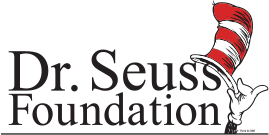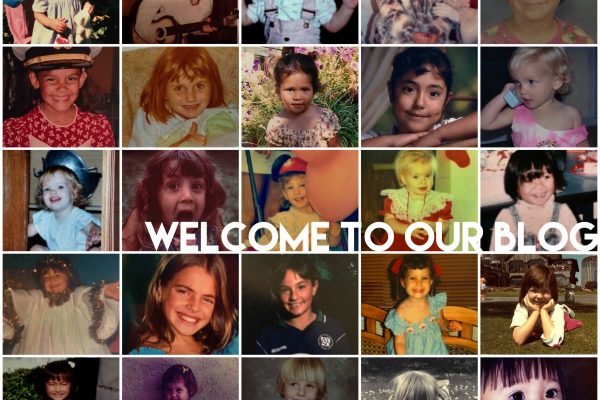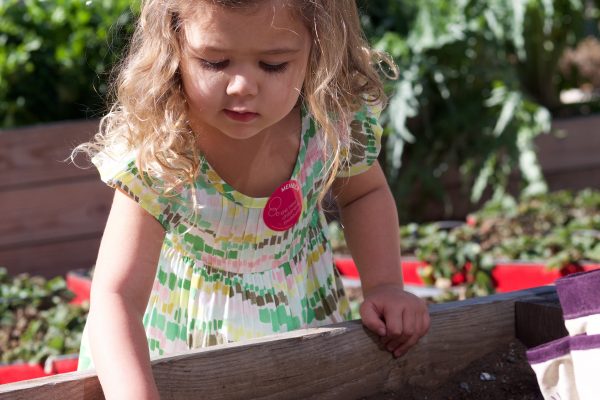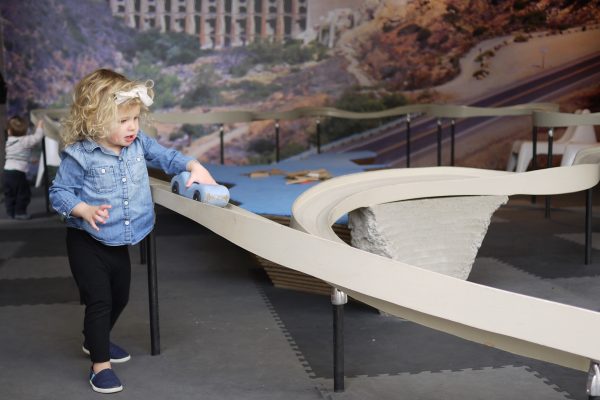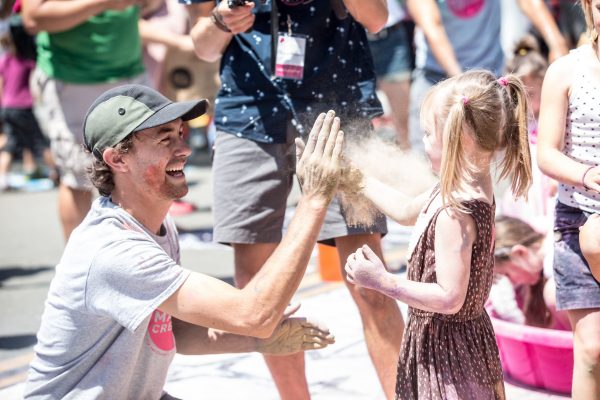Read + Create: Growing Together Garden
This art literature project is inspired by the children’s book, The Day You Begin by Jacqueline Woodson and illustrated by Rafael López. Read the book or watch the live reading listed in the supplies, and then create your own colorful flower garden – similar to the illustrations in the story – using paper, cardboard and crayons. Through this project, let’s celebrate our uniqueness and connections with each other!
This project is designed by the Museum’s Teaching Artists and inspired by our Reading Two-Gether Author Visit series, which provides early learning literacy opportunities for children.
Growing Together Garden Project
AGE: 3+ (with adult support)
TIMEFRAME: 45 min (with story sharing time)
SUPPLIES NEEDED:
- Watch the live reading of The Day You Begin by Jacqueline Woodson at: bit.ly/the-day-you-begin-reading
- Crayons
- Heavy Paper
- Liquid glue
- Natural-colored cardstock or lightweight cardboard
- 3 Paper straws
Directions
1. Read the Story: Start by watching the live reading of The Day You Begin by Jacqueline Woodson with your early learner. This is a story about feeling different and finding the courage to embrace your differences, as well as finding connections. As you watch together, notice and point out to your early learner the beautiful and unique illustrations by Rafael López. Look for unique flowers throughout the book. Ask questions, “What do you see here?” or “What makes this flower special?” Once you have finished the book, get ready to create some art inspired by the ideas of the book and the flower illustrations you observed.
2. Create Your Flowers: Have your early learner draw 3 – 6 unique flowers on their paper. Use the flowers in the book illustrated by Rafael López for inspiration. Talk about how each flower is different and unique and connect these ideas to the characters in the story. Ask your early learner if they can think about someone in the story who felt different? Why they might have felt that way? Also, explore what makes the flowers similar and connect those same ideas to the characters. When ready, work with your early learner to cut out their flowers.
3. Build the Flower Bed: Using cardboard and folding, turn your garden into a 3-dimensional display! Grab the cardstock and help your early learner to fold it in half. Then, fold the cardstock into fours, creating a zig-zag effect. This will be the flower bed onto which your flowers will stand up!
4. Assemble Your Garden: Use the paper straws to create the flower stems. Work with your early learner to cut the paper straws in half and glue them onto the cardboard flower bed created in the previous step. Then, help your early learner to squeeze glue onto the tip of each straw stem and add each paper flower. Let it dry and now you have your flower garden!
5. Discuss Differences + Similarities: Talk with your early learner about the flowers they created and let them share with you how each flower is unique, as well as what they have in common with the other flowers. Ask questions, “What does that flower add to the garden that no other flower brings?” and “What do the other flowers have in common with that flower?”
6. Add More! For extra fun and if time allows, encourage your early learner to use their paper scraps to draw and add leaves, grass, insects and other details to their garden. To create grass, color a strip of paper green, then cut it out with a zig-zag design on one side and glue it over the bottom of the stems.
Additional Learning Activities (Grades Pre-K-2)
Create a Play
Create a play or new story using the garden as a backdrop. Have your early learner consider what might happen in a garden and what the flowers might say to each other? Have them think about how the story might begin and how it will end. Go on a hunt to find and use other objects to act out the play. Then, share it with friends and family.
Nature Exploration
Explore together in nature to find different kinds of plants. Notice their differences and similarities. You’d be amazed where you can find flowers and plants. By going on a walk around a park or just outside where you live. Have your early learner also look for flowers like the ones they made.
Words Alive Related Resources
Words Alive, a local literacy-centered organization and partner of The New Children’s Museum, provides literacy education, resources and programs to families throughout San Diego and beyond. In addition to a link to a virtual reading of The Day You Begin, they have also designed a host of related projects and exercises for early learners and caregivers to try together inspired by this book. Visit wordsalive.org.
Recommended Related Reading (Ages 2 – 8)
- Maybe Something Beautiful: How Art Transformed a Neighborhood by F. Isabel Compoy and Theresa Howell and Illustrated by Rafael López
- The Colors of Us by Karen Katz
- Two Eggs, Please by Sarah Weeks and illustrated by Betsy Lewin
Preschool Learner Foundation Standards (Visual Arts, Social + Emotional Learning, and Literacy)
Age 48 Months:
- Make straight and curved lines; begin to draw rough circle shapes.
- Describe their physical characteristics, behavior and abilities positively.
- Use language to construct short narratives that are real or fictional.
Age 60 Months:
- Draw single circle and add lines to create representations of people and things.
- Compare their characteristics with those of others and display a growing awareness of their psychological characteristics, such as thoughts and feelings.
- Use language to create extended narratives that are real or fictional.
Project made possible through program funding from
